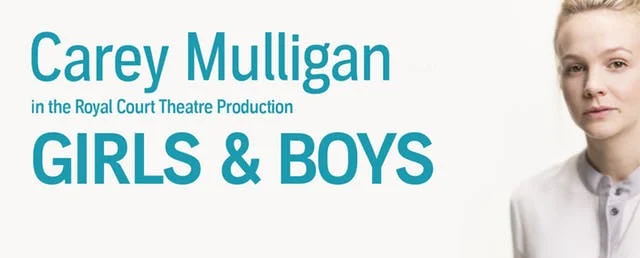REVIEW: “Mary Page Marlowe”
Edward Albee gave us three tall women. Tracy Letts (“August: Osage County”) ups the ante by giving us six. And a baby.
In his latest play, “Mary Page Marlowe”, which opened last week at Second Stage’s Tony Kiser Theatre Off-Broadway following a 2016 world premiere at Steppenwolf in Chicago, Mr. Letts’ titular character surfs waves of feminism amidst the shifting roles of women from mid-century America to the present, offering a fascinating, fragmented portrait of one ordinary woman’s journey through the mysteries of life.
This engaging new play demonstrates the idea that while a person remains the same, year-to-year, moment-to-moment, she is also different, by casting six actors—and a prop baby—to play Mary Page Marlowe, an accountant from Ohio, from infant to age 69. The six women are one, and offer a collective performance that is compelling.
Through the mosaic of eleven different scenes, each featuring Mary Page at a different age, we see the ways in which certain personal behaviors and beliefs develop and ripple across time, and the ways a person changes and doesn’t. Mr. Letts catalogues moments both extraordinary and mundane, showcasing how one can never know what is important or pivotal as it is happening, and how life might only makes sense when looked at in its totality.
The compression required to fit an entire life in 90 intermission-less minutes forces some bursts of unnatural exposition and explanatory dialogue, but on the whole Mr. Letts is masterful at crafting conversations and pacing the action of the play, one he has structured for maximum dramatic effect. He makes each iteration of Mary Page revelatory and frustrating in her own way, imbuing the arc of her story with a fascinating dialectic about fate and individual will. Mary Page remains, like the structure of the play, a puzzle.
The set design by Laura Jellinek is boxy, clunky, and inert, a rising curve of beige slats that reach a plateau, creating a second level stage upon which scenes play out, but aiding little in the action, if occasionally getting in the way. The period costumes by Kay Voyce, however, alongside magnificent hair and wig designs by Anne Ford-Coates and Tom Watson, clearly telegraph the non-linear time leaps, which is helpful, if not essential, since the text remains relatively free of contextual clues, with scant references to news or temporal products or personalities—only the non-chronological unfolding of Mary Page’s narrative.
By keeping it personal, not connecting Mary Page’s evolution too directly to cultural or political events in the play’s timeline, Mr. Letts focuses the story as an intimate one. Forrest Gump, she ain’t. This play is about Mary Page, her rather small and insignificant life juxtaposed with a large question at the core of our existence: do things happen to us or do we make them happen? Is our destiny baked in from birth or do we have the agency of unmitigated free will?
This tension—the tension of what happens to us versus what we control—is explored in every scene of the play, from a fantastic opener in which Mary Page at age 40 (Susan Pourfar) explains to her children that she and her husband are getting a divorce, to a 19 year-old Mary Page (Emma Geer) having her tarot cards read to her in a college dorm room—“You are in charge of your own destiny.”—to age 36 (Tatiana Maslany) talking about an affair and abortion with her therapist—“I didn’t decide on any of it. All of it happened to me.”—the devastating aftermath of a DUI at age 50 (Kellie Overbey), and treatment for a seemingly terminal illness at age 69 (Blair Brown).
Fate or choice, her unhappy alcoholic parents (Grace Gummer and Nick Dillenburg) breed an alcoholic daughter (Mary Page) who raises a drug-addicted son. 12 year-old Mary Page (Mia Sinclair Jenness) wants the “Gigi” album, 36 year-old Mary Page (Tatiana Maslany) fantasizes to her therapist about moving to Paris, 40 year-old Mary Page (Susan Pourfar) tells her children that Dayton, Ohio isn’t Paris, and 69 year-old Mary Page (Blair Brown) winsomely tells a nurse she saw some places in her life—maybe Paris.
This repeated reference marks a small, subtle through line, one of many cleverly planted by Mr. Letts and never too underlined by director Lila Neugebauer, who orders harmony from the many discordant chords of a lifetime, and leads her ensemble cast of 18 players in formidable performances all around.
In the final scene of the play, Mary Page at age 63 (Blair Brown) drops an antique quilt off at the dry cleaners featuring a panel with a woman silhouetted, her head bowed; as she describes the quilt, her fellow Mary Pages assemble on that second tier plateau and assume the same position—perhaps answering the question at the center of the play. It was always in the cards. Mr. Letts shows his hand just enough as Mary Page rides life’s waves, tumbled and tossed, fierce and frustrated, unknown and ultimately for us, unknowable.
Bottom Line: Tracy Letts’ “Mary Page Marlowe” at Second Stage offers a fascinating, fragmented portrait of one ordinary woman’s journey through life, embodied by six actors in eleven time-hopping scenes. The tension of what happens to us versus what we control haunts the text as Mary Page traverses decades, surfing waves of feminism amidst the shifting roles of women from mid-century America to the present. Mr. Letts, director Lila Neugebauer, and an ensemble cast of 18 create a mosaic that is compelling, if ultimately mysterious.
____________
“Mary Page Marlowe”
Second Stage Theater
Tony Kiser Theatre
305 West 43rd Street
New York, NY 10036
Running Time: 90 minutes (no intermission)
Opening Night: July 12, 2018
Final Performance: August 12, 2018
Tickets and Rush Tickets

